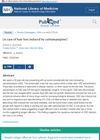Management of Androgenetic Alopecia: A Review
January 2021
in “
International Journal of Research in Dermatology
”
androgenetic alopecia finasteride minoxidil low-level laser therapy dutasteride botulinum toxin A adipose-derived stem cell-conditioned medium platelet-rich plasma combination therapies microneedling hair transplant surgery ultrasound pressure waves polymer-based microspheres Propecia Rogaine LLLT Botox PRP
TLDR Combination therapies are more effective for treating androgenetic alopecia than single treatments.
The review on the management of androgenetic alopecia highlighted that approximately 73% of men and 57% of women experience this patterned hair loss, which can lead to psychological issues such as low self-esteem and depression. The FDA-approved treatments include finasteride and minoxidil, with low-level laser therapy devices also cleared. Alternative therapies like dutasteride, botulinum toxin A, and cell-based treatments (e.g., adipose-derived stem cell-conditioned medium and platelet-rich plasma) were discussed. Combination therapies generally showed higher efficacy than single treatments. Finasteride usage has declined due to sexual side effects, while techniques like microneedling have been used to enhance minoxidil delivery. Hair transplant surgery remains a viable but costly option. Emerging drug-assisted delivery methods, such as ultrasound pressure waves and polymer-based microspheres for finasteride, aim to improve drug efficacy and reduce side effects.

